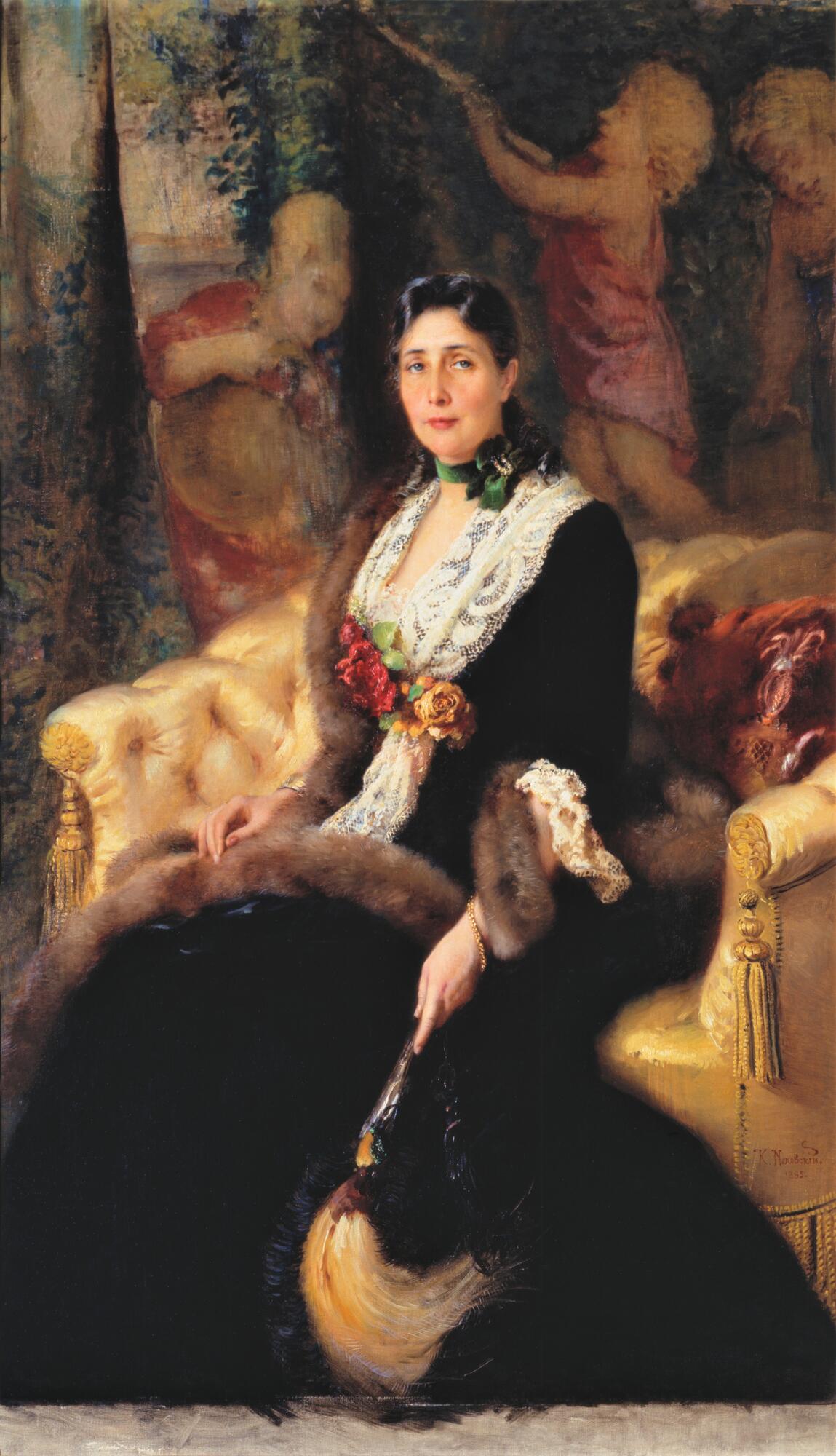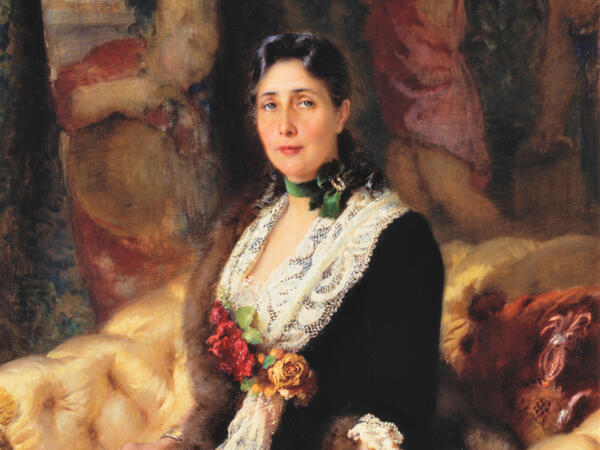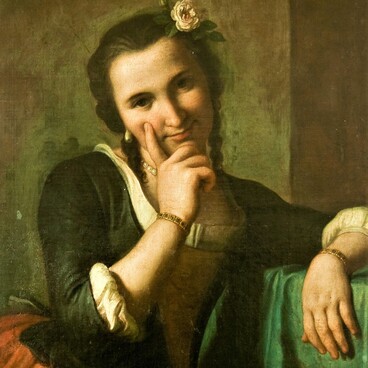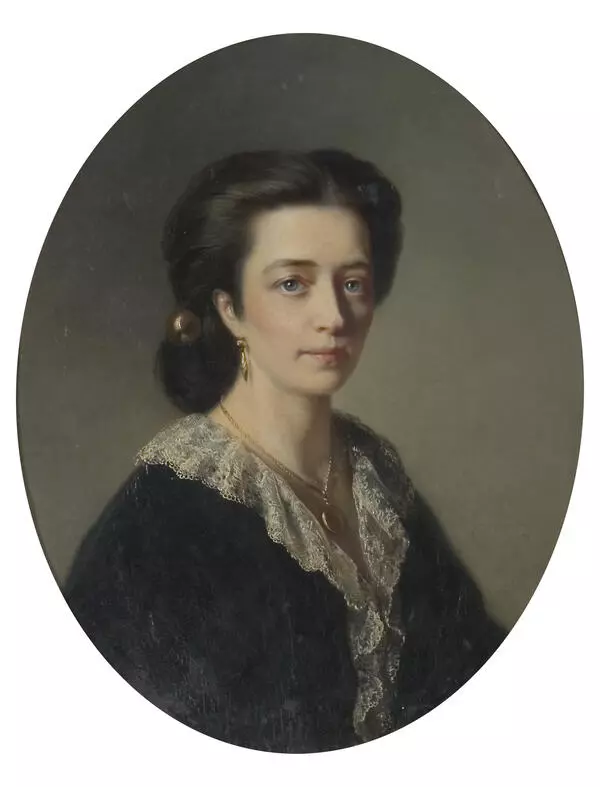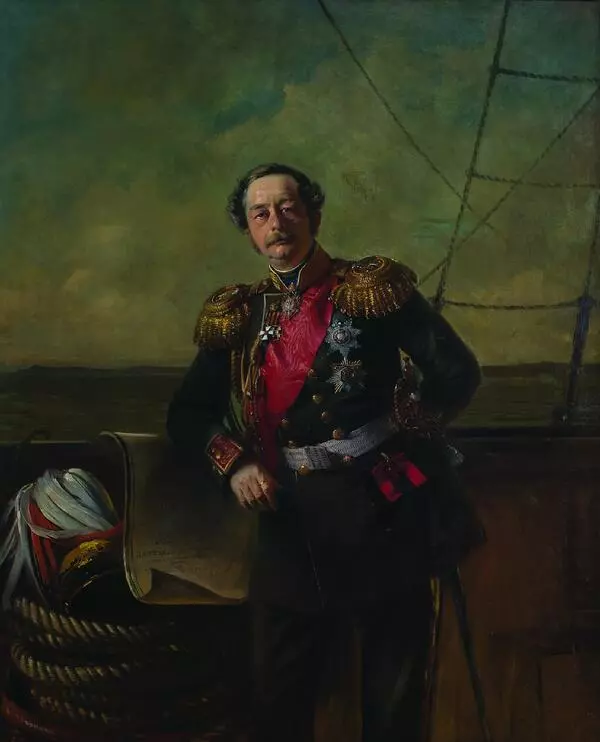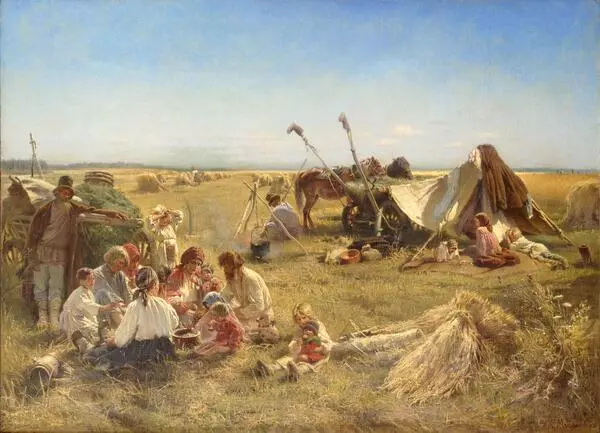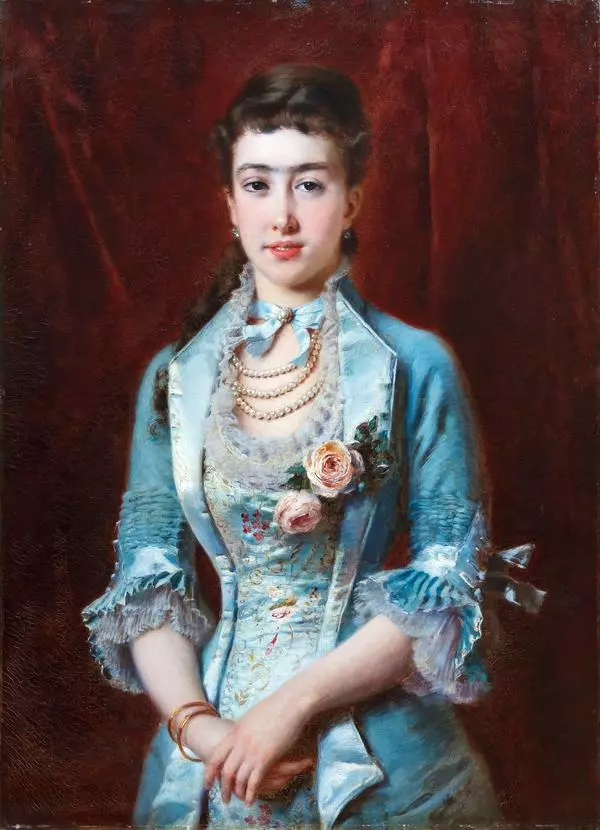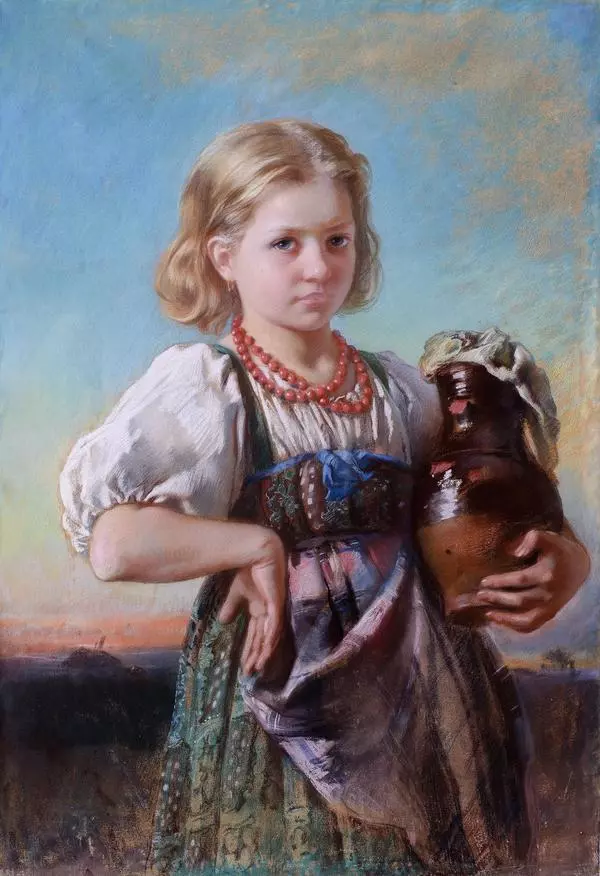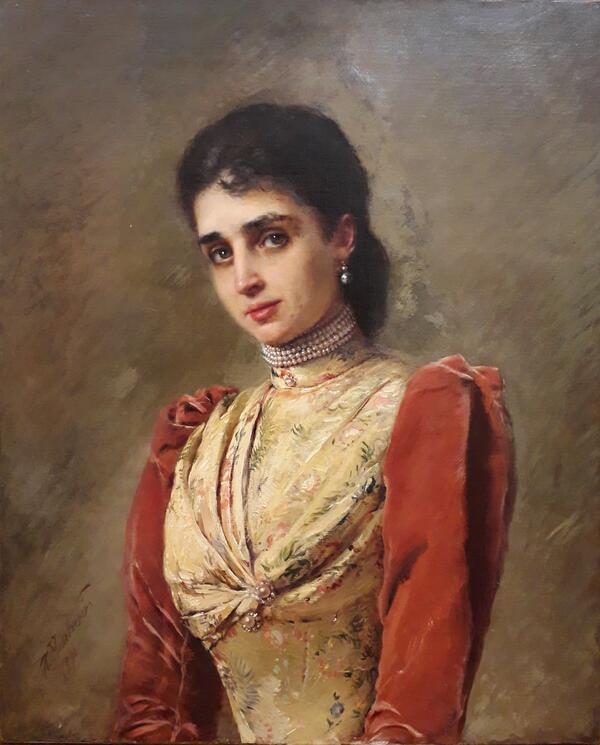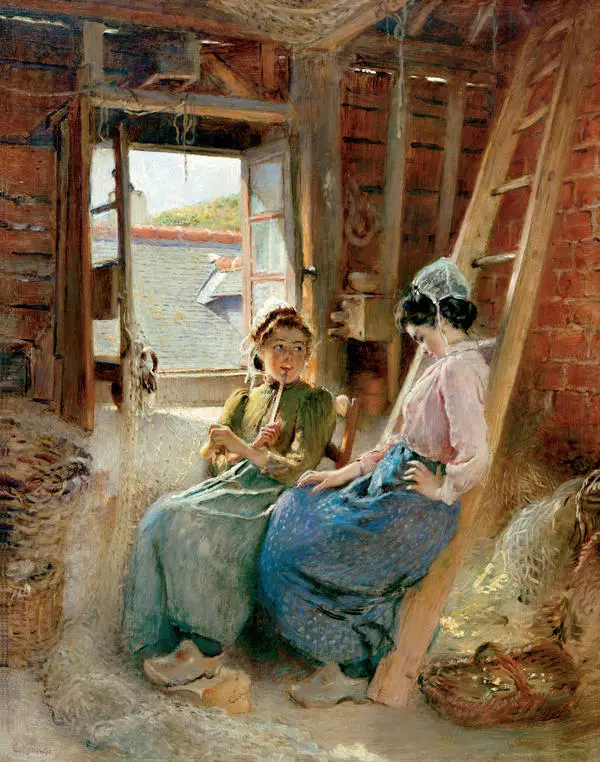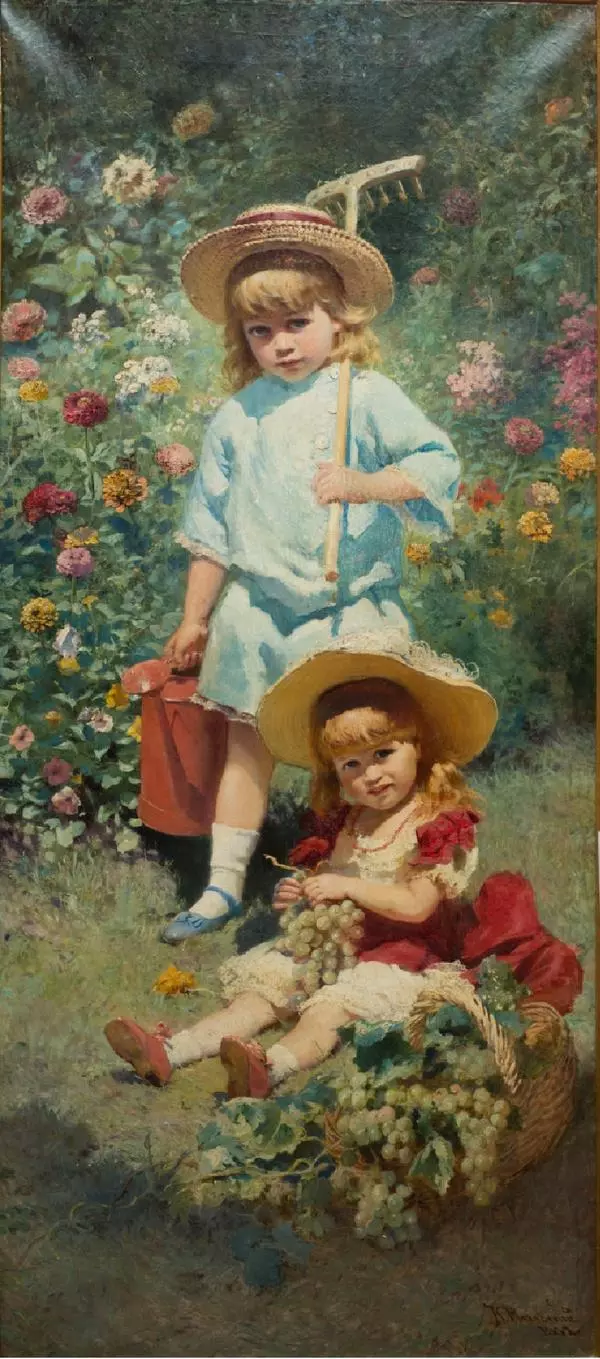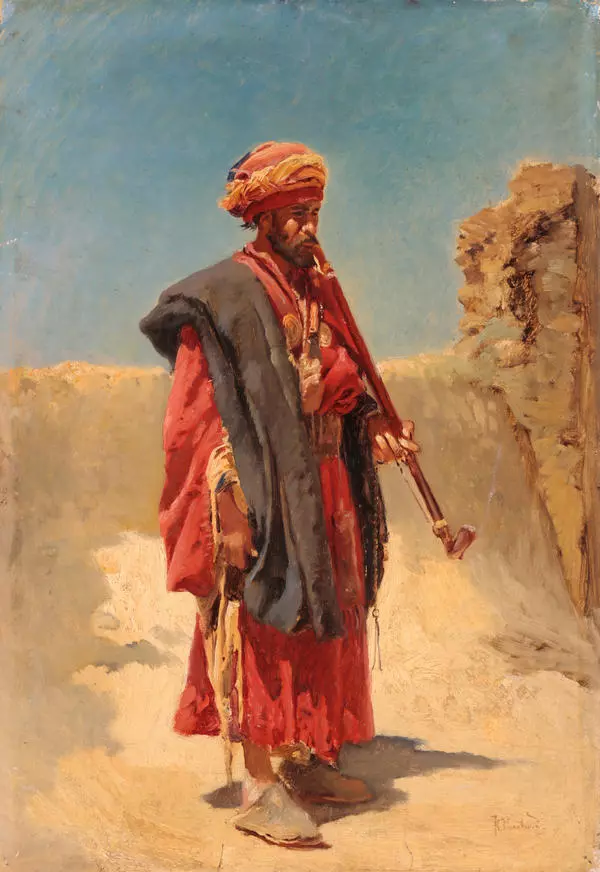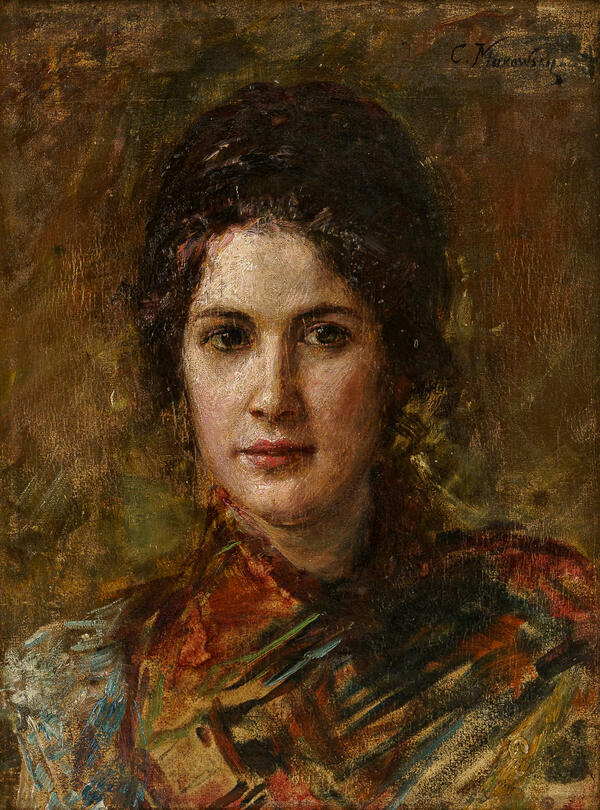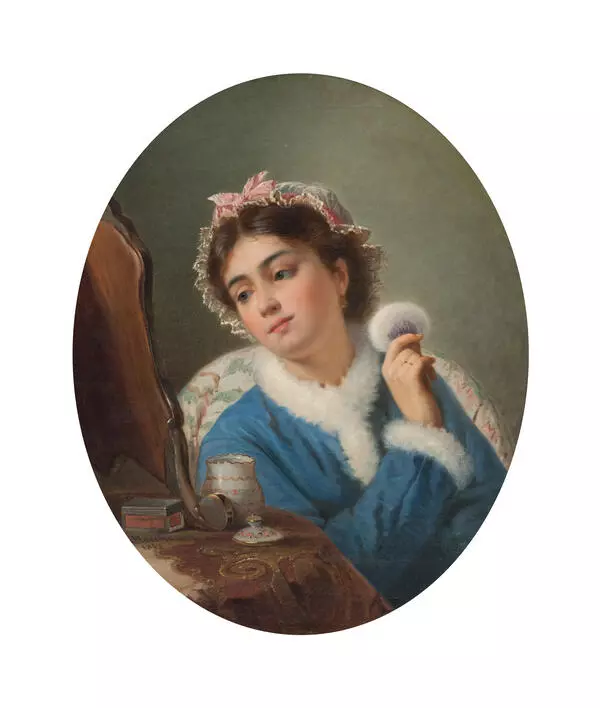The exhibition presents the ceremonial ‘Portrait of an Unknown Woman in a Black Dress’ by Konstantin Makovskiy, painted in 1885. It became an exhibit of the Museum of Fine Arts, re-formed after the Battle of Stalingrad in 1960, from the Tretyakov Picture Gallery. By order of the USSR Ministry for Cultural Affairs, art pieces from large museum and exhibition organizations in Moscow, Leningrad, Saratov and other cities were transferred to this museum.
Makovskiy depicted a woman with a feather fan, sitting in a soft satin armchair. A green ribbon is tied around her neck; the dress is decorated with a bertha and flowers.
A sable fur boa descends from the portrayed woman’s right shoulder. Such neck decorations made of velvet, silk and fur appeared in the Renaissance era. They usually were set with goldwork or gemstones. Boas made of feather or fur became popular in the early 19th century and remained popular until 1914. Russians called them tails and considered an adornment of noble ladies, indecent for young girls.
Makovskiy’s son Sergey recalled that the artist painted such portraits, which were massively commissioned, almost entirely in just one posing session. However, he spent about a month ‘finishing’ the canvas, so no one would suspect him of slopwork.
The main reasons of the success of Makovskiy’s paintings were texture, colorfulness and attention to beautiful surroundings. “I didn”t waste my God-given talent, but also didn”t use it at full breath. I loved my life too much, and it prevented me from completely surrendering to art, ” the artist recalled.
Some researchers suppose that Konstantin Makovskiy”s phenomenon was completely formed exactly in the 1880s, when the artist shifted away from the style of the Peredvizhniki (group of Russian realist painters) and began organizing his own personal exhibitions. Makovskiy was interested not mostly in social themes, but in pictorial questions in the period of painting of the presented portrait. He paid special attention to color used in his paintings: the artist tried to achieve purity and “sonority” of color, authenticity of nature colors, air transparency.
Makovskiy depicted a woman with a feather fan, sitting in a soft satin armchair. A green ribbon is tied around her neck; the dress is decorated with a bertha and flowers.
A sable fur boa descends from the portrayed woman’s right shoulder. Such neck decorations made of velvet, silk and fur appeared in the Renaissance era. They usually were set with goldwork or gemstones. Boas made of feather or fur became popular in the early 19th century and remained popular until 1914. Russians called them tails and considered an adornment of noble ladies, indecent for young girls.
Makovskiy’s son Sergey recalled that the artist painted such portraits, which were massively commissioned, almost entirely in just one posing session. However, he spent about a month ‘finishing’ the canvas, so no one would suspect him of slopwork.
The main reasons of the success of Makovskiy’s paintings were texture, colorfulness and attention to beautiful surroundings. “I didn”t waste my God-given talent, but also didn”t use it at full breath. I loved my life too much, and it prevented me from completely surrendering to art, ” the artist recalled.
Some researchers suppose that Konstantin Makovskiy”s phenomenon was completely formed exactly in the 1880s, when the artist shifted away from the style of the Peredvizhniki (group of Russian realist painters) and began organizing his own personal exhibitions. Makovskiy was interested not mostly in social themes, but in pictorial questions in the period of painting of the presented portrait. He paid special attention to color used in his paintings: the artist tried to achieve purity and “sonority” of color, authenticity of nature colors, air transparency.
